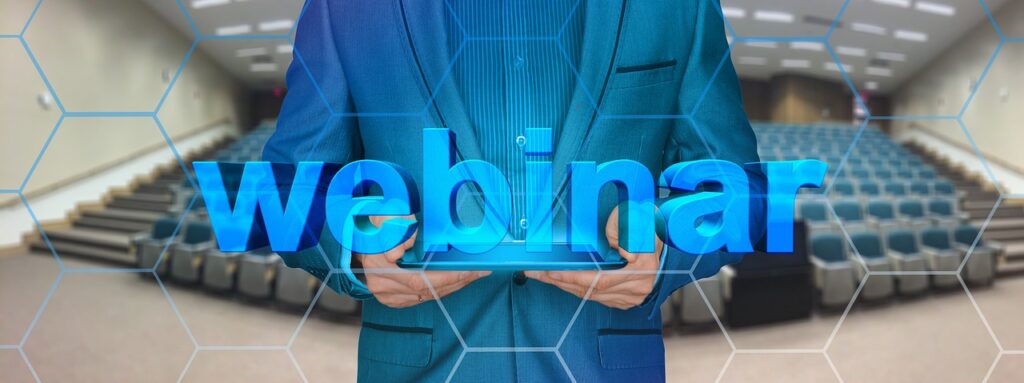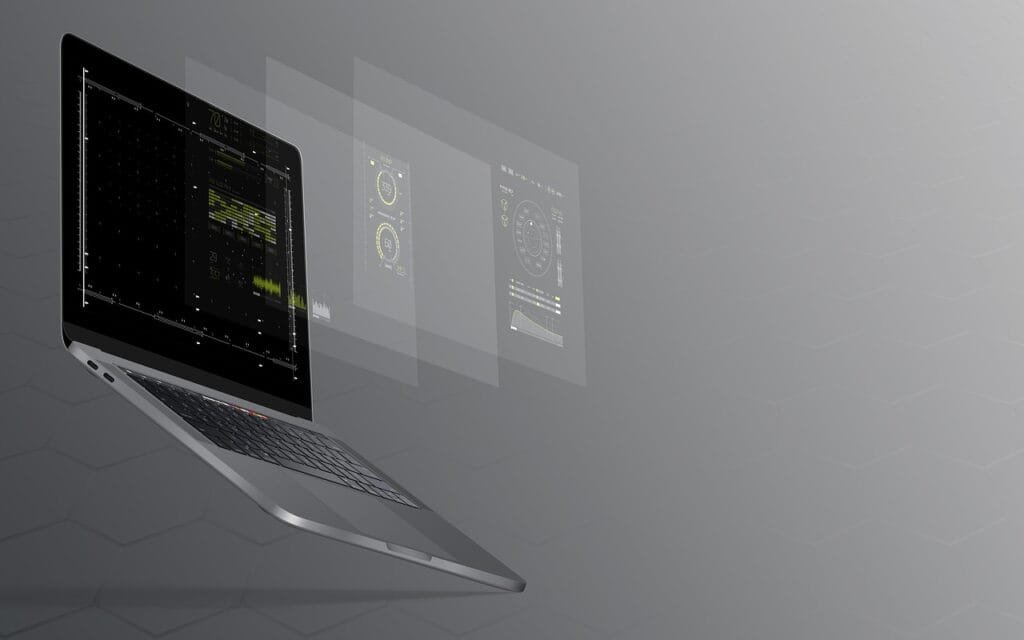In the dynamic digital world, the clamor for personalization echoes with increasing intensity. As webinars continue to morph into pivotal tools for engagement, education, and conversion, understanding the audience has become the holy grail that companies chase. Amidst this pursuit, audience segmentation emerges as the cardinal compass directing marketers and hosts towards the promised land of personalized, impactful, and resonant content. The question isn’t just about reaching an audience anymore – it’s about reaching the right audience, at the right time, with the right message.
The Mechanics
Audience segmentation in webinars isn’t a stroke of art but a science molded by data. Behavioral data, demographic insights, and psychographic contours converge to delineate segments. The granularity can range from broad strokes – like industry professionals and students – to nuanced portraits etched by job roles, geolocations, and even past webinar engagements.
A Symphony of Personalization
Imagine a webinar on fintech innovations. For a CXO, the allure might lie in strategic insights; for a tech enthusiast, it’s the intricate algorithms that charm. Segmentation ensures that invitations are not monolithic billboards but personalized letters, each singing a distinct melody that lures the specific audience. The CXO hears the strategic overtures; the techie, a technological symphony.
The Art and Science of Segment Crafting
Data: The Cornerstone
Collecting data is the prologue of segmentation. But it’s not about hoarding volumes but gleaning quality and relevant data. Every click, registration, and feedback is a narrative, unraveling the hidden aspirations, pressing pain points, and unuttered expectations of the audience.
Analysis: Weaving Narratives
Data, however, is a raw story. The alchemy occurs in analysis, where raw data morphs into insights. Technologies, especially AI, play the role of the meticulous analyst, unearthing patterns, trends, and segments effortlessly.
Segments: Beyond Demographics
The evolved practice doesn’t just nestle in the cozy confines of age, geography, or profession. It’s aspirational – gauging interests, expertise levels, and even specific challenges faced. Each segment, hence, isn’t just a statistical entity but a living, breathing narrative.
Nurturing Engagement Through Segmentation
Customized Content
As each segment unveils, a content ecosystem burgeons around it. The allure of a webinar lies in its ability to resonate, and for that, the one-size-fits-all approach is antiquated. Each content piece, from the introductory email to the webinar’s core content, is tailored, echoing the unique aspirations and challenges of each segment.
A Dialogue, Not A Monologue
A segmented audience transforms webinars from generic lectures to nuanced dialogues. Questions aren’t just addressed; they are anticipated. Each interaction is personalized, echoing the audience’s language, tone, and context. It’s not just about answering questions but about affirming the audience’s unique context, validating their specific journey.
Segment Dynamics and Evolution
Fluidity in Segmentation
Audience segments aren’t static. As industries evolve, so do professionals and their needs. A dynamic model of segmentation ensures that the audience isn’t boxed into static categories. Adaptation and evolution are integral, ensuring relevance in a world dictated by change.
Analytics and Evolution
Post-webinar analytics isn’t about numbers. It’s a reflective process, a looking glass that reveals not just the success but the evolutionary trajectory of audience segments. Every interaction, feedback, and engagement is a seed, containing within it the blueprint of emerging segments.
Technology’s Role in Audience Segmentation
AI and Machine Learning
The granular, dynamic nature of audience segmentation in webinars is powered by AI and machine learning. It’s not just about slicing the audience into different segments but understanding the nuances, the subtle threads that weave the complex tapestry of each segment. AI dives into data, unraveling patterns and trends that are invisible to the naked eye.
Data Analytics
Data is the soul of audience segmentation. Every click, every interaction, every pause is a narrative. But these narratives are complex, multifaceted. Data analytics tools don’t just quantify these interactions; they qualify them. They transform data into insights, numbers into narratives, enabling a nuanced understanding of each segment.
The ROI of Audience Segmentation
Enhanced Engagement
Each segment, powered by insights, nurtures an enhanced level of engagement. Attendees are not passive recipients; they are active participants. This engagement isn’t just qualitative; it echoes in the quantitative matrices – increased attendance, reduced drop-offs, enhanced interaction.
Business Impact
For businesses, this segmentation translates into targeted strategies. Product launches, content strategies, and marketing campaigns are not generic; they are tailored. They echo the specific nuances of each segment, ensuring that every strategy is not just heard but resonates.
Future Trends in Audience Segmentation
Dynamic Segmentation
The future is dynamic. As technology evolves, so does the granularity of segmentation. Future segments won’t just be defined by professional roles or industry affiliations. They will be nuanced, echoing the dynamic, evolving narratives of each professional’s journey.
Real-Time Adaptation
Webinars will transform. They will not be static presentations but dynamic entities. Real-time adaptation will be the norm. Content, interactions, and presentations will morph in real-time, echoing the live feedback and interaction from the audience.
The Integration of VR and AR in Audience Engagement
In the ever-evolving landscape of webinars, the integration of Virtual Reality (VR) and Augmented Reality (AR) is set to redefine audience segmentation and engagement. These technologies bridge the virtual gap, offering interactive and immersive experiences that are tailored to each audience segment.
Hyper-Realistic Experiences
AR and VR enable the delivery of hyper-realistic experiences that are customized to cater to the distinct needs, interests, and preferences of different audience segments. This personalization amplifies engagement, making every participant feel understood, valued, and catered to. It’s not just about viewing content; it’s about experiencing it.
Real-Time Analytics
These immersive technologies are backed by real-time analytics, ensuring that content is not just engaging but adaptive. It transforms as per the real-time responses of the audience, ensuring that each segment is catered to with precision, enhancing the relevance and impact of the content.
Chapter 10: AI-powered Personalization
Dynamic Content Delivery
AI is no longer a back-end tool; it’s becoming integral to content delivery. It ensures that content isn’t static but dynamic, echoing the evolving needs and responses of each audience segment. Every slide, every piece of content is not just viewed but experienced, echoing the nuances of each audience’s segment’s narrative.
Predictive Analytics
AI’s predictive analytics pre-empts audience responses. It’s not about reacting but anticipating, ensuring that content is always a step ahead, resonating with the audience’s needs even before they are articulated. This anticipatory approach amplifies engagement, transforming webinars from informational to experiential.
Chapter 11: The Rise of Omni-Channel Engagement
Seamless Integration
Audience engagement is transcending platforms. It’s no longer confined to the webinar platform but is an omnichannel narrative. Each channel, each platform is interconnected, offering a seamless, integrated experience that echoes the holistic narrative of each audience segment.
Amplified by Social Media
Social media is becoming integral to this omnichannel narrative. It’s not just about sharing content but engaging with it. Social media amplifies the webinar’s reach, echoing its narrative across platforms, ensuring that each audience segment is not just engaged but is part of an evolving, interactive narrative.

Related: Check out our free SEO suite

The Fusion of Data and Storytelling in Webinars
Data-Driven Narratives
In the quest to tailor content for diverse audience segments, the amalgamation of data and storytelling emerges as a pivotal strategy. Rich, analytical data is woven into compelling narratives, making each presentation not just informative but profoundly engaging. Every statistic, every data point tells a story, resonating with the distinct narratives of each audience segment.
Visual Storytelling
Infographics, visualizations, and interactive content elements translate complex data into digestible, engaging visuals. They are not just seen but experienced, ensuring that each audience segment connects with the data on a profound, interactive level.
Interactive Polls and Surveys
Real-Time Engagement
Interactive polls and surveys are transitioning from being informational tools to strategic engagement assets. They capture real-time responses, offering instant insights into the diverse perspectives of each audience segment, making them integral to the webinar’s dynamic content adaptation.
Data Insights for Customization
The insights derived are not just informational but transformational. They shape the content, the delivery, and the engagement strategies in real-time, ensuring that every webinar is not just a presentation but a dynamic, interactive experience.
The Evolving Role of Mobile Engagement
Mobile-First Strategies
With the proliferation of mobile devices, audience segments are increasingly engaging with webinars on-the-go. Mobile-first strategies ensure that content, interactive elements, and engagement strategies are optimized for the mobile experience, making every webinar accessible, engaging, and interactive across devices.
Adaptive Content
Content adapts in real-time, ensuring that whether on a desktop or a mobile device, every audience segment experiences optimal engagement. The narrative, the visuals, the interactive elements are all tailored, offering a cohesive, immersive experience.
Post-Webinar Engagement
Nurturing the Connection
The webinar’s narrative doesn’t conclude with the end of the session. Post-webinar engagement strategies nurture the connection, ensuring that the insights, the interactions, and the experiences continue to resonate, fostering a lasting connection with each audience segment.
Content Repositories
Webinars are archived, transformed into rich, interactive content repositories. They are accessible on-demand, ensuring that the narrative, the insights, and the engagement continue to evolve, echoing the dynamic, evolving narratives of each audience segment.
Conclusion
In the world of webinars, audience segmentation has transformed from a backdrop element to a centerpiece. It is no longer confined to identifying and categorizing viewers based on generic factors. It has expanded to understanding the distinct narratives, preferences, and engagement paradigms of diverse audience segments and shaping webinar strategies to resonate with each uniquely.
READ NEXT:




















